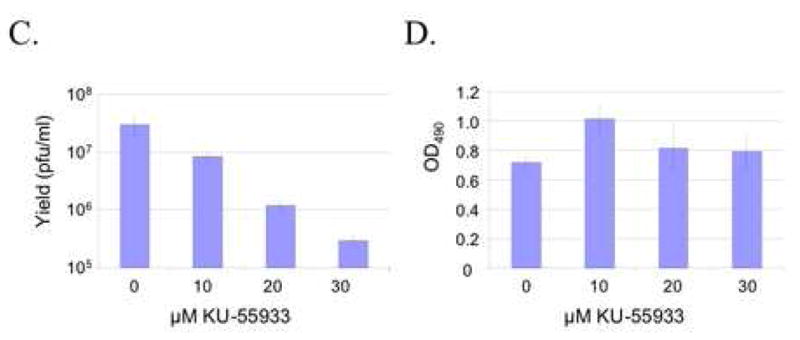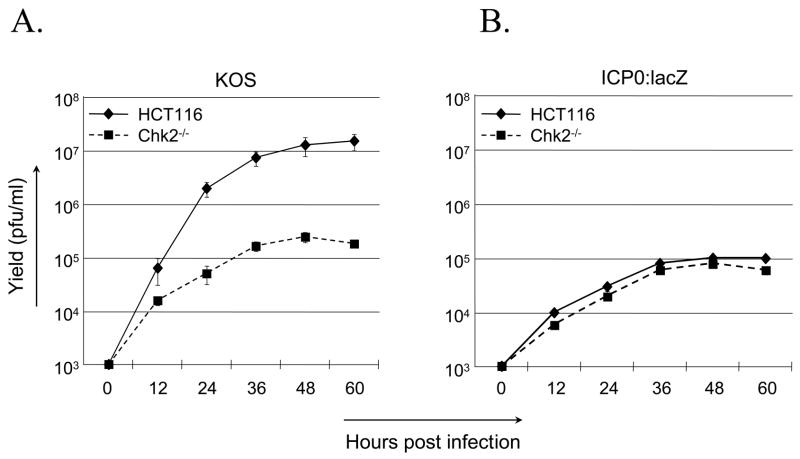Fig. 5.


Chk2 requirement for efficient virus growth. (A, B) HCT116 and HCT116(Chk2−/−) cells were infected at an MOI of 0.2 with either wild-type HSV-1 KOS (A) or ICP0-deficient mutant virus ICP0:lacZ (B). Cells plus media were harvested at various times post-infection and viral yields assessed by plaque assays on Vero cells (A) or 7B0-104 cells (B). All infections were carried out at least in duplicate. Error bars in B and for certain data points in A are smaller than the data-point symbols and thus are not visible here. (C) AD-293 cells were incubated for 1 h with 0–30 μM KU-55933 and infected in duplicate with HSV-1 KOS (MOI=0.2) for 4 h in the continued presence or absence of the drug. Cells were washed and fed with fresh medium with or without the drug. Cells and media were harvested at 18 hpi for determination of virus yields by plaque assay on Vero cells. (D) Mock-infected AD-293 cells were incubated with KU-55933 as in (C) and cell viability measured by MTS assay at 18 hpi for 10 wells per drug concentration. (E) 293T cells were infected with either HSV-1 KOS (MOI=0.5) or ICP0:lacZ (MOI=5) and harvested at the times indicated in hpi above the lanes. Immunoblotting was performed with the antibodies shown. (D) 293T cells were mock infected or infected with ICP0:lacZ at an MOI of 2 and processed 24 h later for flow cytometry.

